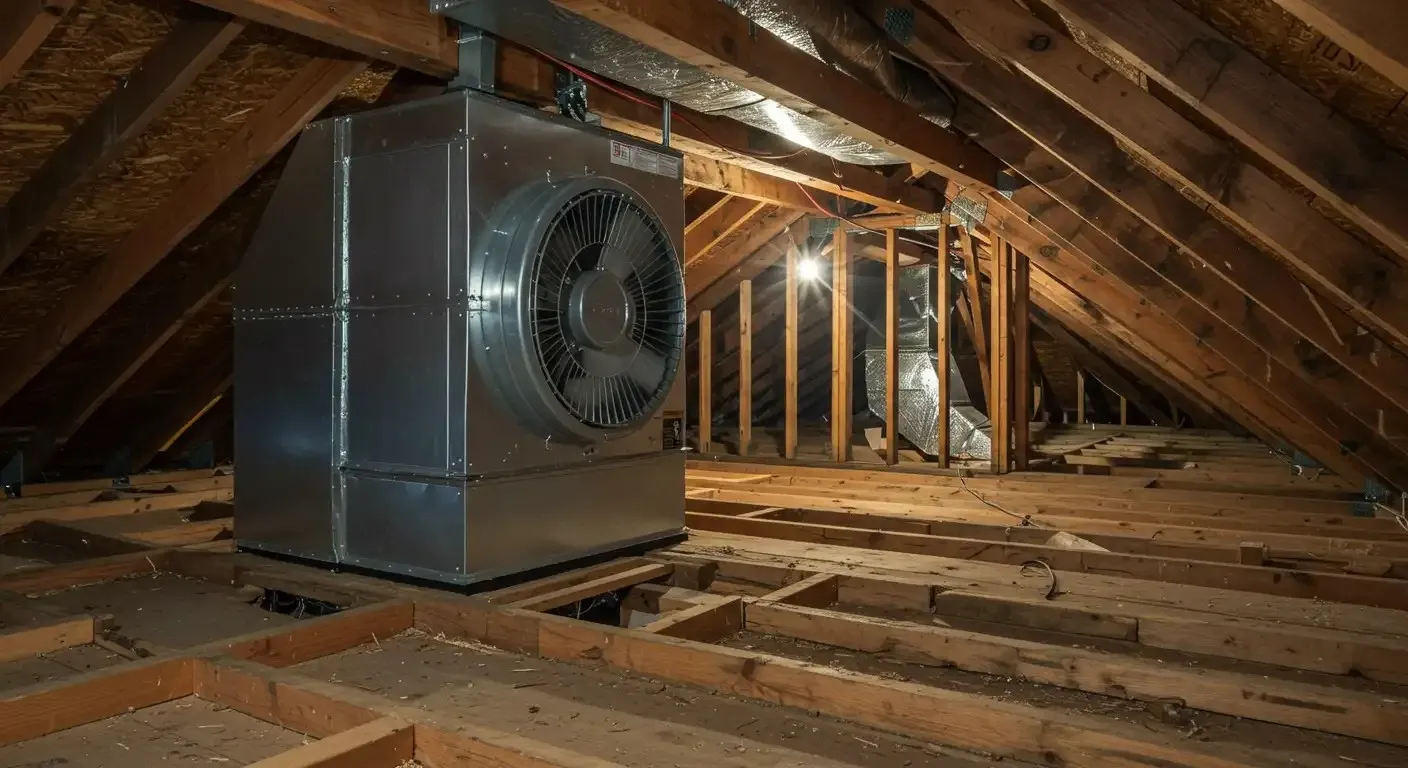Combat Southern California's heat with professional attic and whole house fan installation. These energy-efficient systems drastically reduce heat buildup, lowering energy bills and improving home comfort. Attic fans specifically remove super-heated attic air, reducing AC strain and extending roof life. Whole house fans cool entire living spaces by drawing in fresh outdoor air, enhancing indoor air quality. Benefits include significant energy savings and superior comfort. Our meticulous installation process ensures optimal performance and safety for a cooler, healthier home.
Professional Attic & Whole House Fan Installation
In Southern California, battling the heat is a year-round concern. While your air conditioner is a powerful ally, the intense sun can turn your attic into an oven, radiating heat down into your living spaces and forcing your AC to work overtime. A professionally installed attic or whole house fan from Top Shelf Heating & Air, Inc. offers a powerful, energy-efficient solution to combat this problem, improving comfort, reducing costs, and enhancing your home's overall health.
By focusing on smart ventilation, these systems tackle the root cause of heat buildup, providing significant relief that you can feel in your home and see on your energy bills.
Understanding the Difference: Attic Fan vs. Whole House Fan
While both systems are installed in the attic, they serve distinct purposes and provide different benefits. Understanding the difference is key to choosing the right solution for your home.
Attic Fans: Targeting Attic Heat
An attic fan is a ventilation workhorse designed with one primary goal: to actively push super-heated air out of your attic. On a sunny day, attic temperatures can soar to 150°F or more. This extreme heat degrades your insulation, damages roofing materials, and radiates downward, forcing your Air Conditioning system into a constant battle.
An attic fan, either mounted on the roof or on a gable wall, creates powerful exhaust ventilation. It pulls cooler outside air into the attic through existing soffit or gable vents and expels the hot, stagnant air. This process can lower attic temperatures by up to 50°F, creating a thermal buffer between the sun and your living space.
Whole House Fans: Cooling Your Entire Home
A whole house fan is designed to cool your living space directly. Installed in the ceiling of a central hallway, this large, quiet fan pulls cool evening or morning air from open windows and circulates it throughout your entire home. The air is then pushed up into the attic and exhausted through the vents.
This creates a refreshing breeze, flushes out stale indoor air, and rapidly cools the entire house, often allowing you to turn off your AC completely during milder weather or overnight. It’s an ideal way to improve ventilation and comfort while drastically cutting cooling costs.
The Benefits of Strategic Ventilation
Installing a fan is more than just moving air; it's an investment in your home's efficiency, comfort, and structural integrity.
- Significant Energy Savings: By reducing the heat load on your home, both fan types drastically reduce the strain on your AC unit. An attic fan helps your AC run more efficiently and for shorter cycles. A whole house fan can often replace the need for AC altogether, leading to substantial savings on your utility bills.
- Improved Home Comfort: A whole house fan delivers a constant, gentle breeze that makes your entire home feel cooler and more pleasant. An attic fan prevents the top floor of your home from becoming uncomfortably hot and stops heat from radiating down from the ceiling long after the sun has set.
- Enhanced Indoor Air Quality: A whole house fan is one of the most effective ways to ventilate your home. It replaces the stale, stuffy air filled with cooking odors, pet dander, and other indoor pollutants with fresh, clean outdoor air in minutes.
- Extended Roof and AC Lifespan: Extreme attic heat is a primary cause of premature roof aging, causing shingles to warp, crack, and lose their protective granules. By keeping the attic cooler, a fan protects your roof investment. Similarly, by easing the workload on your air conditioner, you reduce wear and tear on its critical components, helping it last longer.
- Moisture and Mold Prevention: In cooler, damp months, attic fans can help prevent moisture buildup that leads to mold, mildew, and wood rot in your attic's structural framing.
Our Meticulous Installation Process
Proper fan installation is critical for safety, performance, and longevity. Our expert technicians follow a precise process to ensure your system operates flawlessly.
- Comprehensive Home Assessment: We begin by evaluating your home's layout, attic size, existing ventilation, and electrical infrastructure. This allows us to accurately calculate your ventilation needs and recommend the right type, size, and model of fan for optimal performance.
- Strategic Placement and Sizing: We determine the ideal location for the fan—whether on the roof, a gable wall, or in a central hallway ceiling—to ensure maximum airflow and efficiency. We make sure the fan is correctly sized for your home's square footage and attic volume.
- Safe Structural and Electrical Work: Our certified technicians handle all aspects of the installation. This includes precisely cutting any necessary openings, securely mounting the unit to prevent vibration and noise, and professionally handling all electrical wiring to meet strict safety codes.
- Ventilation System Optimization: A fan is only as good as the vents it works with. We inspect your existing attic vents (soffit, ridge, or gable) to ensure there is adequate intake airflow to prevent the fan from creating negative pressure, which could pull conditioned air from your home or, in the worst case, backdraft gas appliances.
- Final Commissioning and Walkthrough: Once installed, we thoroughly test the fan and its controls. We walk you through its proper operation, explain any features like timers or variable speed settings, and ensure our work area is left perfectly clean.
Frequently Asked Questions About Attic and Whole House Fans
Are these fans noisy?
Modern attic and whole house fans are engineered for quiet operation. While not completely silent, they are significantly quieter than older models. Proper, secure installation is also key to preventing rattling or vibrational noise.
Can I run my whole house fan and my air conditioner at the same time?
No. A whole house fan is designed to pull air from open windows. Running it with the AC on and windows closed would pull your expensive cooled air out of the house, wasting a tremendous amount of energy. They should be used at separate times.
How much attic ventilation do I need?
A general guideline is the 1/300 rule: one square foot of vent area for every 300 square feet of attic floor space, balanced between intake (soffit) and exhaust (ridge/gable) vents. However, a professional assessment is crucial to ensure your system is properly balanced for a power ventilator.
Is an attic fan useful during the winter?
Yes. An attic fan equipped with a humidistat can run during the winter to expel moisture-laden air that rises into the attic from your living space. This helps prevent condensation, which can lead to mold growth and rot.




